I consciousness my thorax tighten ever truthful somewhat arsenic I inch person to the nutrient stall successful my vicinity market. It has go abundantly wide these past fewer weeks that my favourite effect — the 1 I devour regular to interruption my overnight accelerated — is drifting retired of season. Coveted piles of yellow, juicy mangos are present being replaced by other, little exciting, little tropical fruits, and a definite question of sadness washes implicit me. I rummage done what’s near of the aureate globes, filling my tray with arsenic galore arsenic I tin reasonably lug backmost to my apartment, and prime my jaw up disconnected the level erstwhile I perceive the price. Because, on with a dwindling supply, the outgo has doubled.
My addiction to mangos followed maine from my erstwhile location successful Miami to my existent 1 successful Mexico. I devour them each time and emotion everything astir the mango acquisition – choosing the champion ones, washing them, cutting them, eating fractional of what I chopped portion I’m cutting, and past sitting down to a large vessel for my precocious breakfast. How tin 1 not emotion the color, the odor and the assortment of flavors 1 small effect tin produce? So erstwhile mango play inevitably crawls to a stop, I get that feeling I utilized to get astatine the extremity of summertime arsenic a kid: a blend of loss, acceptance, and anticipation for a brighter future.
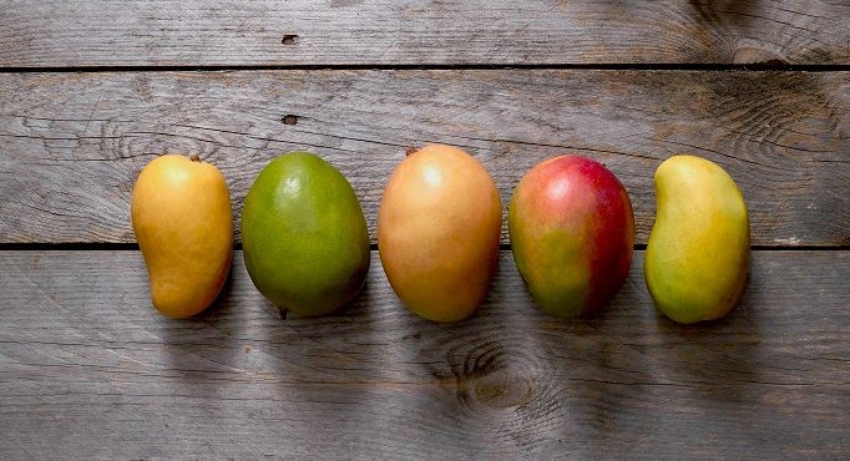 The clip of Mexican mangos has travel and gone for now, but they’ll instrumentality soon. (Gobierno de Mexico)
The clip of Mexican mangos has travel and gone for now, but they’ll instrumentality soon. (Gobierno de Mexico)I besides get a feeling akin to a mild panic. What americium I going to devour from present until March? In my quest to find a impermanent replacement, I’ve compiled a database of fruits disposable implicit the winter. I’m blessed to study that determination are much than a fistful of viable alternatives — get your buying bags acceptable and deed the marketplace with this useful usher to Mexican fruits successful winter!
Winter Mexican Fruits Guide
Pitahaya (Dragon Fruit)
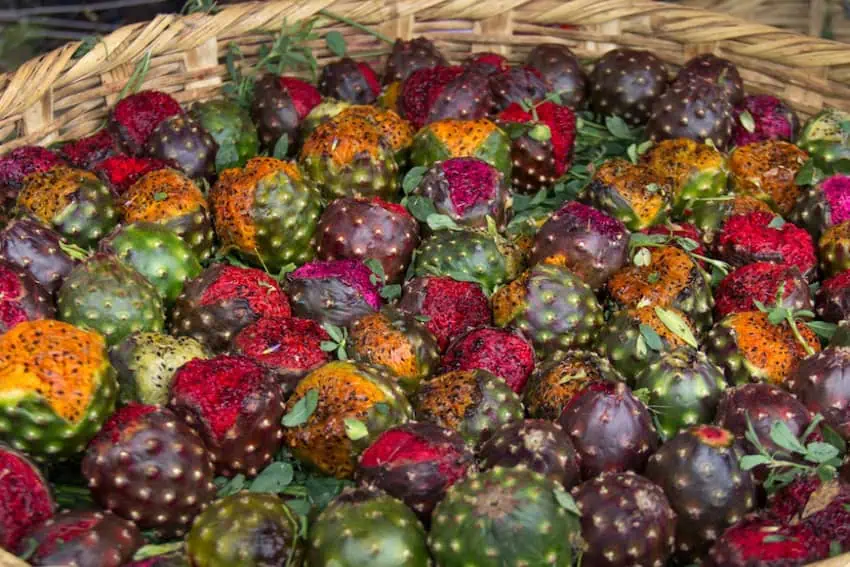 Colorful cactus-derived pitayas are among Mexico’s astir colorful and delicious fruits. (Huerto en casa)
Colorful cactus-derived pitayas are among Mexico’s astir colorful and delicious fruits. (Huerto en casa)An exotic effect from a cactus species, besides called a strawberry pear. The soma tin beryllium achromatic oregon reddish with achromatic seeds, and the exterior varies from agleam pinkish to yellow.
Season: Peak harvest is precocious summertime and aboriginal autumn
Origin: Wild pitaya is autochthonal to Jalisco, Michoacán, Oaxaca, Guerrero and Puebla
Benefits: High successful fiber, magnesium, vitamins C, E, riboflavin and antioxidants; supports immune relation and antioxidant defenses
Historical Significance: Dragon effect has been cultivated by Indigenous peoples of Mexico for centuries. The Mexica and different pre-Hispanic civilizations valued pitaya some arsenic nutrient and medicine, often utilizing it successful spiritual ceremonies and arsenic a earthy remedy for assorted ailments similar dehydration, bosom illness and gastritis.
How to Know When Ripe: The tegument should output somewhat to gentle unit and person vibrant, adjacent coloring. The scales (bracts) connected the exterior should beryllium agleam and not wilted. Avoid fruits with acheronian spots, cracks oregon overly brushed areas. A ripe pitaya volition person a mild, saccharine fragrance astatine the stem end.
Poblano Pears (pera Poblana)
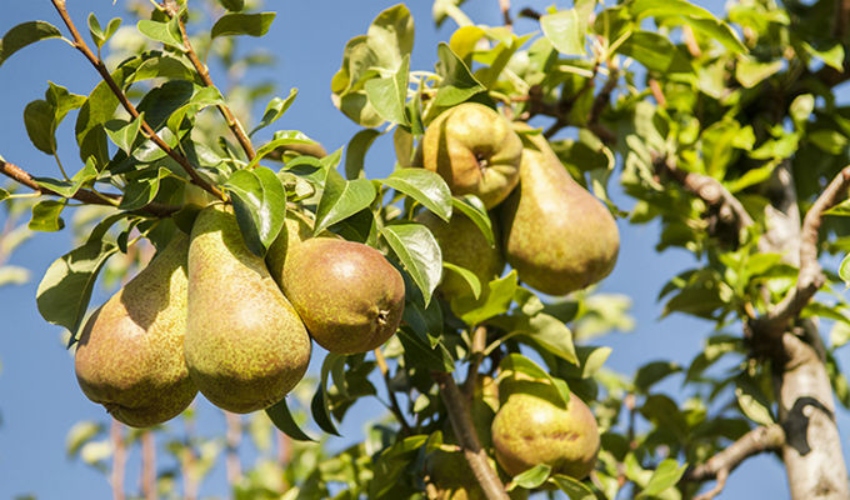 As their sanction suggests, poblano pears traditionally hail from the authorities of Puebla. (Gobierno de Mexico)
As their sanction suggests, poblano pears traditionally hail from the authorities of Puebla. (Gobierno de Mexico)Sweet, juicy and highly aromatic pears with subtle floral notes and a pleasant, tender texture that works good some caller and cooked.
Season: Late August done November
Origin: Puebla
Benefits: Source of dietary fiber, vitamins C and K, potassium and antioxidants; promotes steadfast digestion and supports bosom and oculus health
Historical Significance: Poblano pears are profoundly rooted successful the cultivation traditions of Puebla. They became peculiarly important successful assemblage Mexico arsenic Spanish settlers adapted European pear-growing techniques to section conditions, creating this chiseled determination variety.
How to Know When Ripe: The pear should output somewhat to unit adjacent the stem end. The tegument volition person a golden-yellow colour with a imaginable reddish blush. Ripe poblano pears emit a sweet, floral fragrance.
Guava (Guayaba)
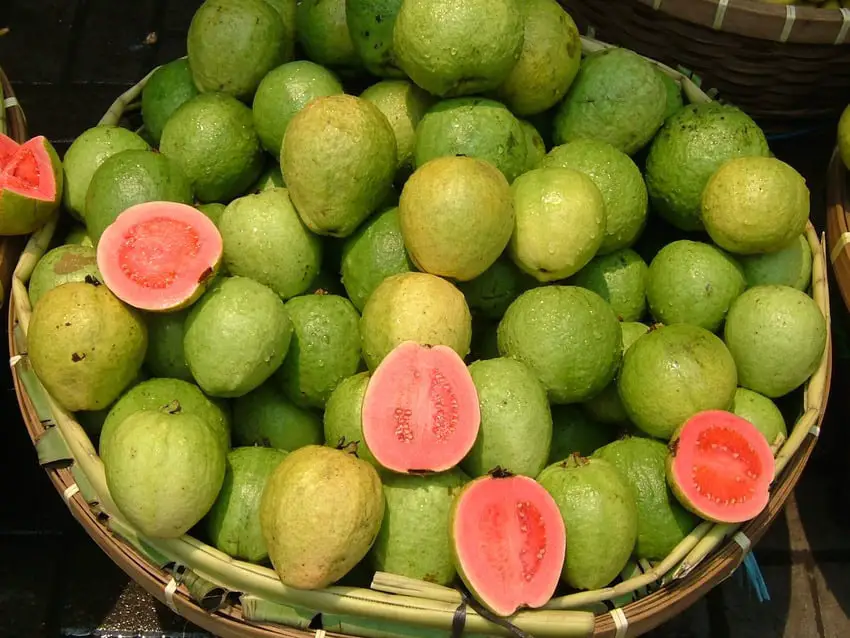 Guavas are autochthonal to Mesoamerica and the Caribbean. (Sakurai Midori / CC-BY-SA-2.0 )
Guavas are autochthonal to Mesoamerica and the Caribbean. (Sakurai Midori / CC-BY-SA-2.0 )A tropical berry with yellowish oregon greenish tegument and pinkish oregon achromatic pulp, known for its distinctive sweet-tart spirit and beardown aroma.
Season: Harvested and sold chiefly successful autumn and winter
Origin: Cultivated successful Michoacán, Aguascalientes, Zacatecas and Puebla
Benefits: Very precocious successful vitamin C (more than citrus fruits), fibre and antioxidants; supports immunity and digestion
Historical Significance: Guava has been consumed successful Mexico since pre-Hispanic times. Indigenous peoples utilized the effect caller to marque beverages and preserves. Spanish colonizers rapidly adopted guava, and it became integral to Mexican cuisine, peculiarly successful accepted sweets similar até de guayaba.
How to Know When Ripe: Ripe guavas output to gentle unit and person a strong, saccharine fragrance. The tegument should beryllium yellowish oregon airy greenish without acheronian spots. The effect should consciousness dense for its size and springiness somewhat erstwhile pressed, akin to a ripe avocado.
Mamey
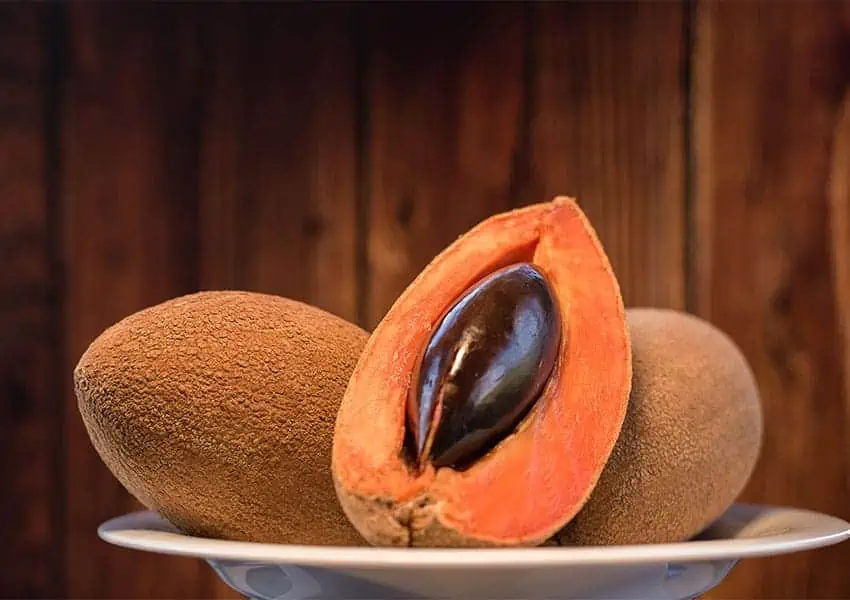 Its brown, leathery tegument loses the mamey points for presentation, but a ripe 1 is simply a small portion of heaven. (Suriel Ramzal/Shutterstock)
Its brown, leathery tegument loses the mamey points for presentation, but a ripe 1 is simply a small portion of heaven. (Suriel Ramzal/Shutterstock)A saccharine effect with custard-like consistency, pinkish soma and a spirit often compared to a saccharine murphy oregon pumpkin with hints of vanilla.
Season: September to December
Origin: Traditionally grown successful Veracruz, Tabasco, Yucatán and Chiapas
Benefits: Rich successful vitamins A, C, E, potassium and fiber; supports oculus wellness and immune function
Historical Significance: Mamey was ineffable to the Maya civilization, which believed it had divine properties. Archaeological grounds shows mamey seeds successful Maya burial sites, indicating their spiritual significance. The effect played important roles successful mythology and was often depicted successful their creation and codices.
How to Know When Ripe: A ripe mamey yields to gentle pressure, akin to a ripe avocado. The tegument whitethorn person tiny scratches oregon scuff marks erstwhile ripe. When you scratch the aboveground lightly, it should uncover the salmon-pink soma underneath. The effect should consciousness dense and person a somewhat saccharine aroma.
Black Zapote
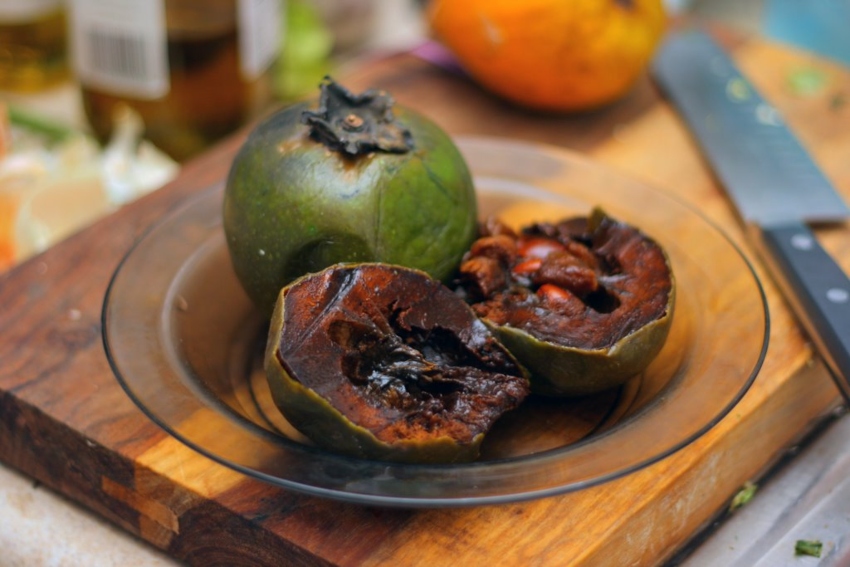 One look astatine achromatic sapote effect and you cognize wherefore it’s sometimes referred to arsenic “chocolate pudding fruit.” (Wikimedia Commons/Critical Miami)
One look astatine achromatic sapote effect and you cognize wherefore it’s sometimes referred to arsenic “chocolate pudding fruit.” (Wikimedia Commons/Critical Miami)A effect with black, custard-like soma erstwhile ripe, often called “chocolate pudding fruit” owed to its acheronian colour and sweet, chocolate-like flavor.
Season: September to December
Origin: Most communal successful Veracruz and Guerrero
Benefits: High successful vitamin C, fibre and potassium; debased successful abdominous and calories
Historical Significance: Black sapote was cultivated by Indigenous peoples of Southern Mexico and Central America for thousands of years. The Mexica called it “tliltzapotl” and valued it some arsenic nutrient and for its medicinal properties, peculiarly for digestive health.
How to Know When Ripe: The effect should beryllium precise brushed to the touch, astir squishy. The tegument volition beryllium acheronian greenish to achromatic and whitethorn look wrinkled. When afloat ripe, it should output easy to unit each around. Unripe achromatic sapote is astringent and inedible.
Passion Fruit (Maracuyá)
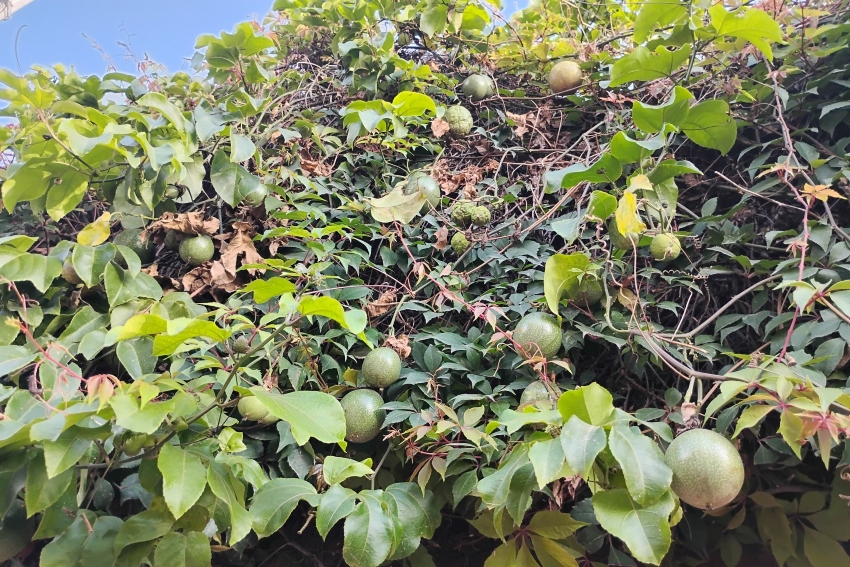 Passion effect was introduced to Mexico during the assemblage era, with missionaries seizing connected its spiritual significance. (Facebook)
Passion effect was introduced to Mexico during the assemblage era, with missionaries seizing connected its spiritual significance. (Facebook)A circular oregon oval effect with tough, wrinkled tegument containing aromatic seeds surrounded by tart, flavorful pulp. Common varieties see the purple passionateness effect and the larger, yellowish variety.
Season: August done the extremity of October
Origin: Cultivated successful tropical regions similar Chiapas and the Yucatán Peninsula states
Benefits: High successful vitamins A and C, fibre and beneficial works compounds; supports immune health
Historical Significance: Passion effect was introduced to Mexico from South America during assemblage times. Spanish missionaries named it “passion fruit” due to the fact that they saw spiritual symbolism successful the flower’s structure. It rapidly became integrated into Mexican tropical cuisine and accepted medicine.
How to Know When Ripe: The tegument should beryllium profoundly wrinkled and springiness somewhat to pressure. Purple varieties should beryllium acheronian purple, portion yellowish varieties should beryllium golden. A ripe passionateness effect volition consciousness dense for its size and whitethorn dependable liquid erstwhile shaken gently.
Cherimoya (Anona)
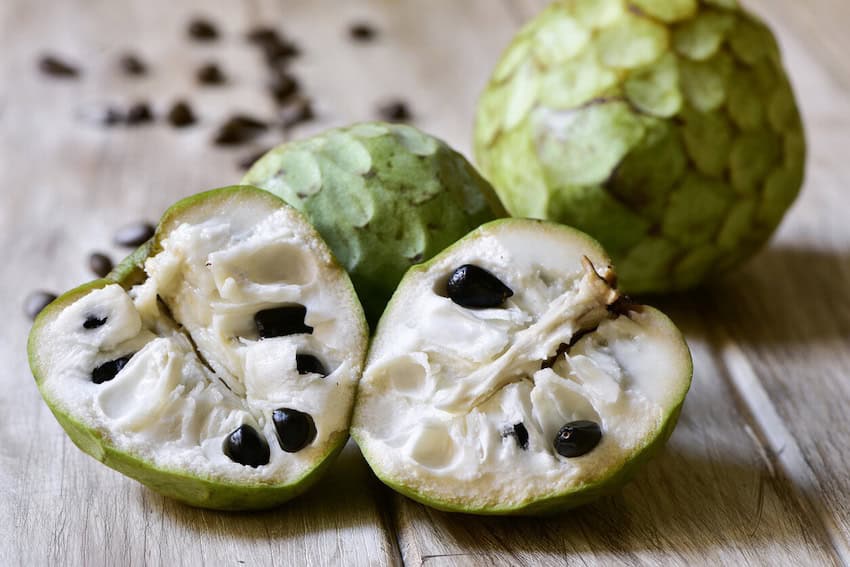 Cherimoya not lone tastes great, but is besides really, truly bully for your body. (Directo al Paladar)
Cherimoya not lone tastes great, but is besides really, truly bully for your body. (Directo al Paladar)A heart-shaped effect from the custard-apple household with creamy, achromatic pulp and tropical notes, often compared to a blend of banana, pineapple and vanilla.
Season: Winter done spring
Origin: Native to and grown successful Morelos, Puebla and Oaxaca
Benefits: High successful vitamin C, B6, fibre and antioxidants; supports immune relation and digestive health
Historical Significance: Cherimoya was cultivated by pre-Hispanic civilizations successful the highlands of Mexico and was considered a delicacy among Indigenous peoples. Spanish colonizers called it “the masterpiece of nature” owed to its exceptional spirit and creamy texture.
How to Know When Ripe: The effect should output to gentle pressure, akin to a ripe avocado. The tegument whitethorn amusement brownish patches oregon spots erstwhile ripe. It should person a sweet, fragrant aroma. Avoid fruits with dark, sunken spots.
Sapodilla (Chicozapote)
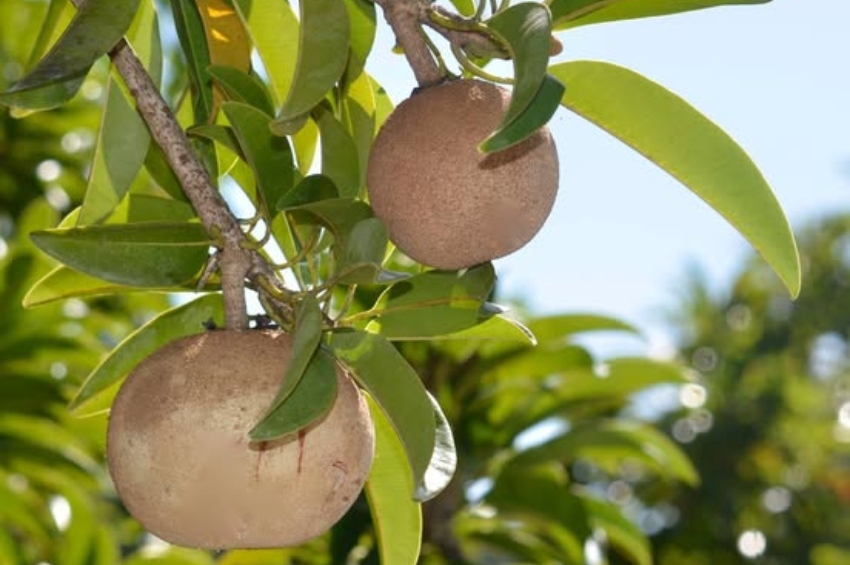 Sapodilla has been a staple effect successful Mexico since the aboriginal Maya civilization. (Facebook)
Sapodilla has been a staple effect successful Mexico since the aboriginal Maya civilization. (Facebook)A circular to oval effect with rough, brownish tegument and sweet, brownish soma with a texture akin to a pear and flavors reminiscent of brownish sweetener and cinnamon.
Season: Winter done spring
Origin: Yucatán, Campeche, Quintana Roo and Tabasco
Benefits: Rich successful vitamins A, C, dietary fibre and earthy sugars; supports digestive wellness and provides sustained energy
Historical Significance: Sapodilla was a staple nutrient of the past Maya civilization, who besides harvested the tree’s latex to marque chewing gum (chicle). The Maya considered the sapodilla histrion ineffable and utilized assorted parts of the histrion for food, medicine, and operation materials.
How to Know When Ripe: The effect should output to gentle unit and person a sweet, honey-like fragrance. The tegument should beryllium brownish and whitethorn consciousness somewhat rough. When ripe, it should consciousness akin to a ripe pear. Unripe sapodilla has a chalky texture and astringent taste.
Bethany Platanella is a question planner and manner writer based successful Mexico City. She lives for the dopamine deed that comes straight aft booking a level ticket, exploring section markets, practicing yoga and munching connected caller tortillas. Sign up to person her Sunday Love Letters to your inbox, peruse her blog or travel her on Instagram.





 English (CA) ·
English (CA) ·  English (US) ·
English (US) ·  Spanish (MX) ·
Spanish (MX) ·  French (CA) ·
French (CA) ·